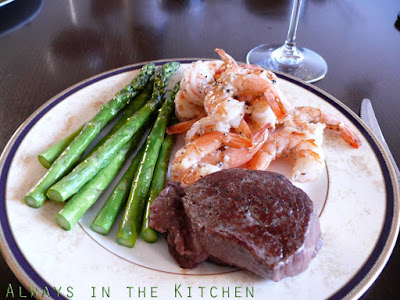
Having recently come to appreciate a perfectly cooked green bean, I have been keen to find interesting ways to serve them. This dish contains the wonderful arrangement of Salade Niçoise, along with the Lebanese-type tahini dressing. It was a perfect confluence of tuna dishes that I wished to make, namely samke harra (a sesame-smothered fish dish from Lebanon) and the classic salade composée from Nice (whose ingredients are a hotly debated subject anyway).
I was sorely tempted to name it Salade Libaniçoise.
You can pretty much see everything in the picture, but I'll lay out the recipe for your entertainment, anyway. The tuna and the capers are the only elements served warm - I used the same skillet for both - the other parts can be prepared in advance. The purple potatoes are a type called Quartz, here in Germany, but you can of course use any kind of waxy potato that you like. These were too pretty not to showcase.
Salade Niçoise et Libanaise
Serves 2
150 grams mixed greens (I've used lambs' lettuce with arugula and shreds of beetroot)
2 eggs, boiled
125 mL Niçoise olives, stones in
30 mL capers, rinsed & fried in olive oil
100 grams potatoes, boiled, cooled, & sliced
100 grams haricots verts, or other fine green beans, steamed and quick-cooled in ice water
a few cherry tomatoes, halved
200 grams of tuna steak, pressed with sesame seeds and lightly seared on all sides (do not overcook!)
Tahini Dressing
45 mL (3 tablespoons) tahini, stirred well
big pinch of coarse/kosher salt
Juice of half a lemon
1 clove garlic, pressed
15 mL olive oil
cold water, if necessary, to made a thick salad-dressing consistency
In a small bowl, combine the dressing ingredients, mixing well with a fork or stick blender. Add a little cold water, a tablespoon at a time, and stir until it becomes creamy and the texture of pourable salad dressing.
Layer the ingredients onto the platter. If you green beans are still wet, lay them on some paper towel to dry off, so they don't sog out the salad. Arrange the greens around the bottom, and then place the potatoes, egg halves, beans, and tomatoes, however you like, but leaving a space to put the tuna. Tumble the olives into all the nooks and crannies between the other elements.
As soon as the tuna and capers are added to the platter, drizzle the dressing as artistically as you can manage over the various elements of the salad. I see from this that I really need to invest in a sauce bottle with a nozzle, so that I can better control the flow - this one got a bit blobby-looking.

It was really quite filling, and completely delicious.




















